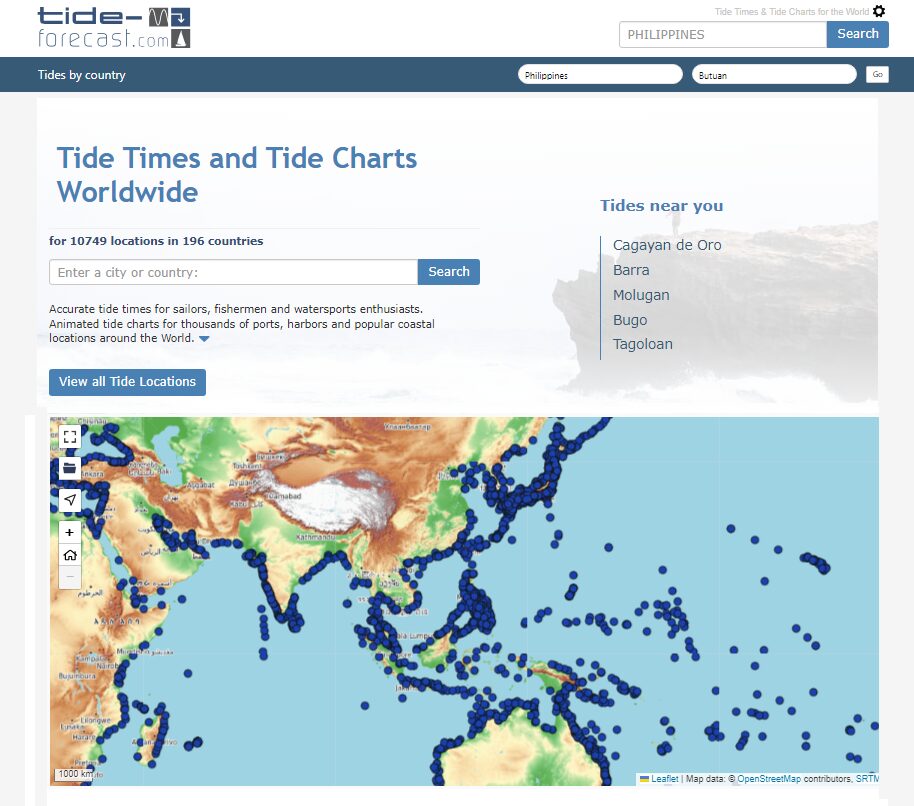The Tide-Forecast are used for tidal prediction and show the daily times and levels of high and low tides, usually for a particular location. Tide heights at intermediate times between high and low tide can be approximated by using the rule of twelfths or more accurately calculated by using a published tidal curve for the location. Tide levels are typically given relative to vertical datum and the mean lower low water datum in the Philippines.
Tide-Forecast are published in various forms such as paper based tables and tables available on the Internet. Most tide tables are calculated and published only for major ports, called standard ports and only for one year standard ports can be relatively close together or hundreds of kilometers apart. The tide times for a minor port are estimated by the tide table user manually calculating using the published time and height differences between a standard port and the minor port.
The dates of spring tides and neap tides, approximately seven days apart, can be determined by the heights of the tides on the classic tide tables: a small range indicates neaps and large indicates springs. This cycle of tides is linked to the phases of the moon, with the highest tides spring tides occurring near full moon and new moon.
However, successive semidiurnal tides are linked to the moon orbital period, that are approximately with hours in each day or about a minutes but many other observations and considerations are required to develop accurate tide tables. On the Atlantic coast of northwest Europe, the interval between each low and high tide averages about 6 hours and 10 minutes, giving two high tides and two low tides each day, with the highest tides about 2 days after full moon.
The tides received relatively little attention in the civilizations around the Mediterranean Sea, as the tides there are relatively small, and the areas that experience tides do so unreliably. The number of theories were advanced, however, from comparing the movements to breathing or blood flow to theories involving whirlpools or river cycles. A similar breathing earth idea was considered by some Asians.
 '
'
